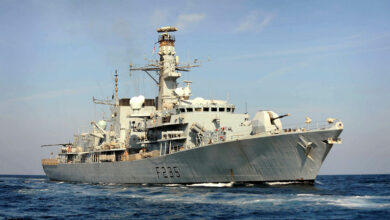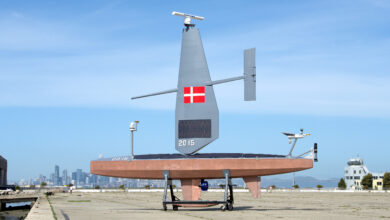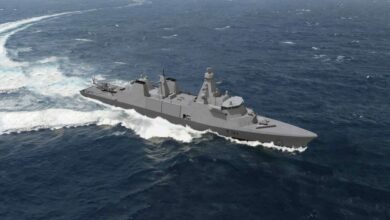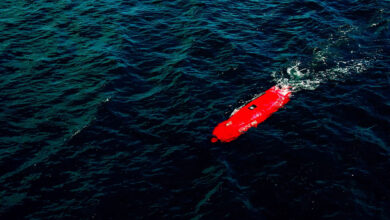Royal Navy Unveils ‘Future Vision’ of Autonomous Fleet
The Royal Navy unveiled its “future vision” for an autonomous fleet based on a design challenge for young engineers at UK Naval Engineering Science and Technology (UKNEST).
According to the challenge, “The future vision envisages drones based in the stratosphere to be launched at a moment’s notice; uncrewed fast attack crafts housing smaller autonomous boats; aircraft carriers propelled by both sea-based biofuels and wind power; and an underwater flagship at the center of the fleet.”
It also includes “increased use of artificial intelligence to assist with low-level planning and underwater transport units carrying anything from munitions to food.”
Modular Vessels
The service revealed one of the futuristic programs — Persistent Operational Deployment Systems (PODS) — that could become a reality in the coming decade.
The service described the PODS as “interchangeable modules that can be fitted to the surface fleet” and carry “vital” assets for marines operations such as an “autonomous boat for surveillance and reconnaissance, quadcopter drones to deliver supplies, humanitarian aid, and disaster relief stores or medical equipment.” The shipping container-sized modules could also be molded into a medical room or an operation control center at sea.
The modules will be transported to the ship using “heavy-lift drones or autonomous boats,” saving the vessel a trip to stock up on essentials, making the operation quicker and seamless.
Unmanned Surface and Subsurface Vessel
Meanwhile, the UK Ministry of Defense (MoD) recently released a notification requiring proposals for Uncrewed Surface and Subsurface Vessel (USSV) for the marines. The MoD provided a glimpse of a potential vessel to be housed in the module when it specified that the USSV should be interoperable with other ships to be launched and recovered at sea.
The MoD also stated that the vessel should be “multi-payload, low-signature, long-endurance” to add to the marines’ surface and subsurface covert capability. The agency said that it should have a “low visual signature” on the surface and be “completely autonomous” while operating within the “Naval Strike Network.”
Navy’s Push For Automation
The navy’s push for innovation and automation received a boost last year when the service’s overall budget was increased by £24 billion ($33 billion) over four years.
Second Sea Lord, Vice Admiral Nick Hine said: “In a future scenario if we find ourselves unable to compete traditionally in terms of mass, we must think differently if we are to regain the operational advantage.
“The young engineers who worked on this project are thinking radically and with real imagination and reflect how the Royal Navy is thinking too.”












